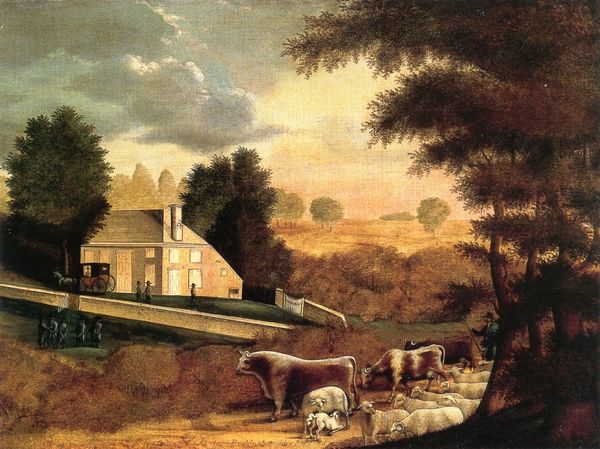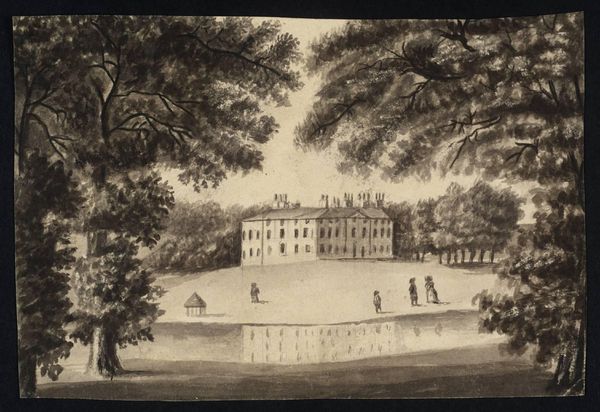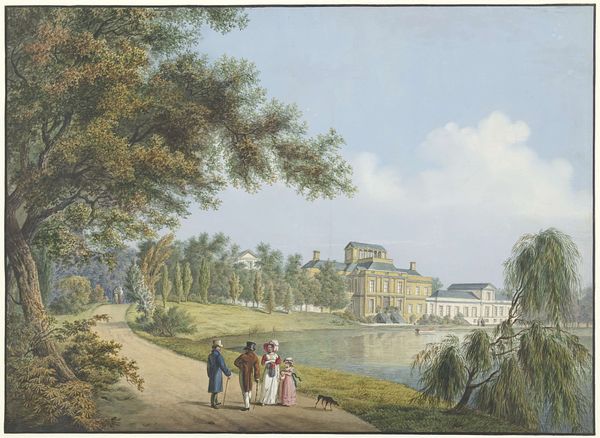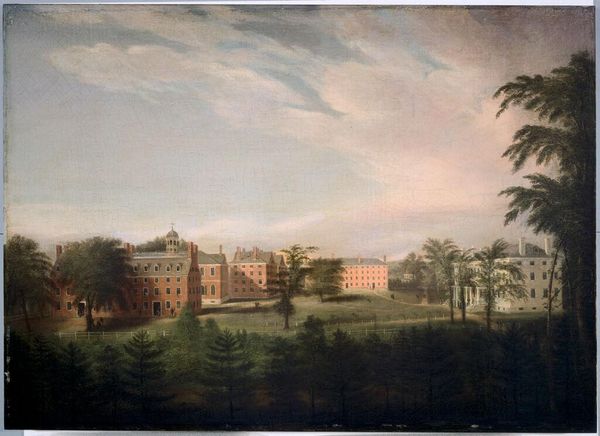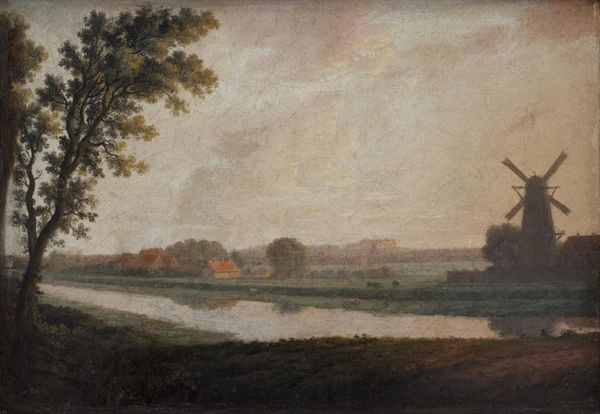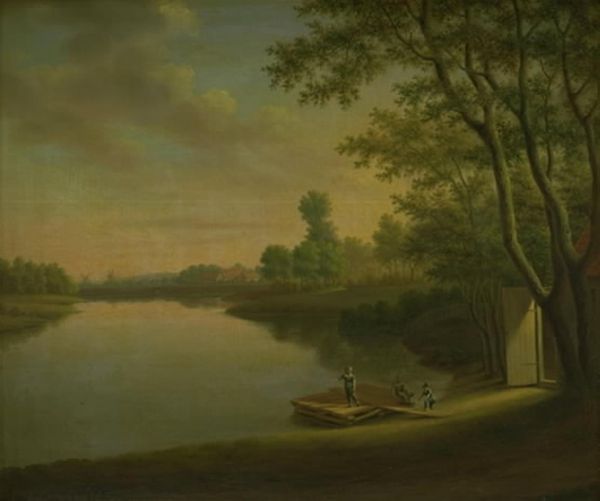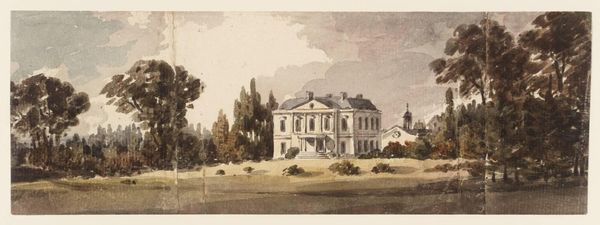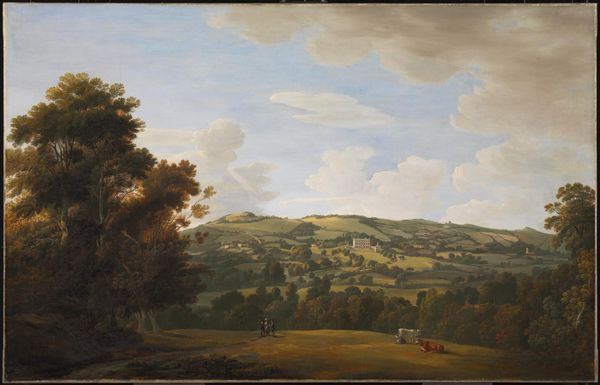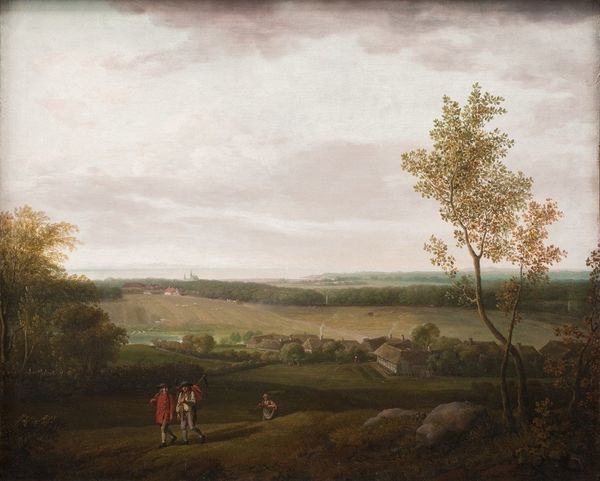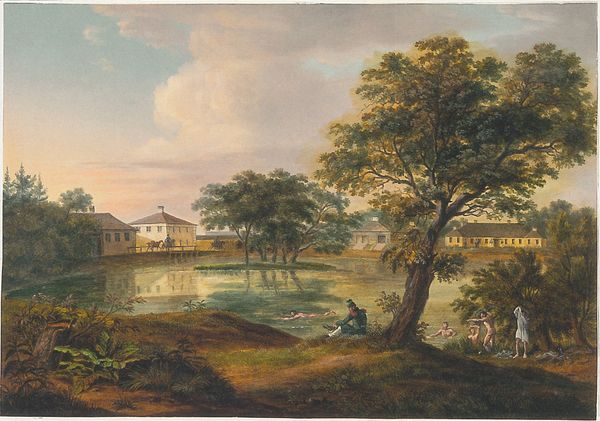
painting, watercolor
#
neoclacissism
#
painting
#
landscape
#
oil painting
#
watercolor
#
cityscape
#
watercolour illustration
#
genre-painting
#
watercolor
Dimensions: overall: 94 x 134.6 cm (37 x 53 in.) framed: 109.8 x 151.1 x 4.4 cm (43 1/4 x 59 1/2 x 1 3/4 in.)
Copyright: National Gallery of Art: CC0 1.0
Curator: Here we have George Ropes's "Mount Vernon," painted in 1806. It seems to be executed in watercolor and possibly oil. My initial reaction is that it’s rather idyllic and a bit stiff. Almost… romanticized, wouldn’t you say? Editor: Definitely, and immediately what strikes me is the use of watercolor which gives the work an appealing lightness and clarity, as though it’s all suspended in air. I'm curious about the specific pigments used, and what the source might be. Also what sort of brushes, because those fine details wouldn't happen without specialized tools and a developed artisan trade to get them. Curator: Indeed, and beyond its materiality, it places George Washington's estate within the narrative of early American national identity. Look at how Ropes positions Mount Vernon atop the hill; a near-mythical space presented for collective consumption and memorialization of a patriarchal figure. Editor: I agree. You know what’s interesting, too? The scale feels deliberately domestic, not imposing, and it reinforces this sense of controlled gentility. It presents a picture of elite leisure but made accessible, less about production and more about refined consumption, wouldn't you say? The figures, too, seem to be performing some kind of aesthetic appreciation within that context. Curator: Precisely! Note how those figures, seemingly engaged in leisure, occupy the lower portion of the landscape. It's almost as if they, and by extension, we, are invited to partake in the cultivated respectability embodied by the architecture and its surrounding grounds. Who gets to claim proximity to this legacy becomes the quiet subtext, reflecting the emerging class stratifications of the era. The image invites not critical engagement, but sentimental association. Editor: Very true. Considering how essential agriculture was at the time, portraying it through landscape—the soft curves of the grassy hills in place of fields—downplays production, almost sanitizes it. How the artist, Ropes, chooses what *not* to portray is almost as important as the chosen subject. I keep thinking, this has all been consciously made, carefully constructed with a definite purpose in mind, down to the quality of materials themselves. Curator: The choices surrounding this are all political acts. Thinking about this now I appreciate how it illuminates the complexities inherent in nation-building through idealized depictions of both land and its custodians. Editor: Yes! Now when I look, it reminds me to think about who supplied the watercolor itself, and all the invisible labor required for its production. A single piece carries a vast web.
Comments
No comments
Be the first to comment and join the conversation on the ultimate creative platform.

